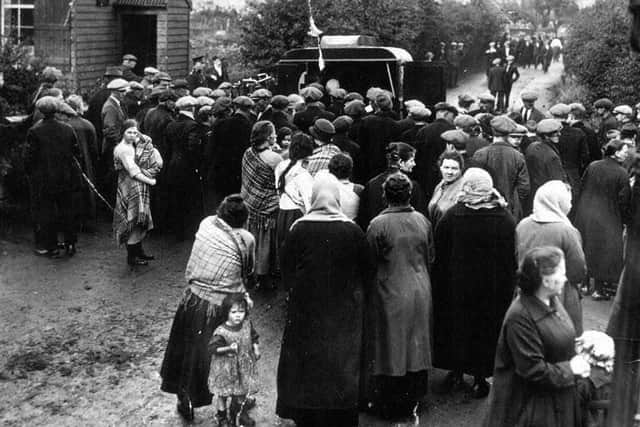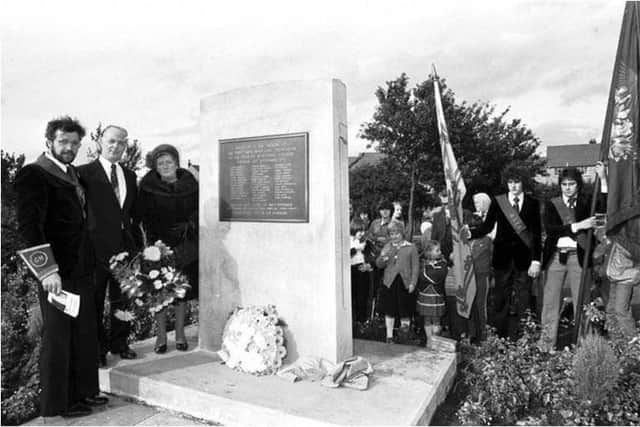Remembering the tragedy of the Redding Pit Disaster


So on August 1 they did manage to pay their respects at the Redding memorial which marks the loss of 40 lives in the unforgettable disaster of 1923.
Next week brings the anniversary of the tragedy, a devastating event in the life of a small community and one of the darkest days in the history of the Falkirk district.
Advertisement
Hide AdAdvertisement
Hide AdAt 5am on Tuesday, September 25, an inrush of water flooded much of No. 23 pit and by the time the rescue operation was completed in December the bodies of 40 men had been recovered.


The main shaft of the colliery was on the north bank of the Union Canal west of Redding village and the coal was being worked in a southerly direction towards a dyke of hard rock created by an ancient geological fault which separated No. 23 from old abandoned coal workings filled with water.
It was believed that the dyke was thick enough to stop water coming in but it turned out that on the abandoned side a sump, or chamber, had been cut deep into the dyke making it thinner and it was at this point that water entered and flooded the pit. Sixty-six men were trapped below and a huge rescue operation was mounted involving teams from all over the district and beyond.
After five hours, twenty-one men emerged through an old shaft called the Gutter Hole.
Advertisement
Hide AdAdvertisement
Hide AdHuge crowds of anxious relatives gathered near the pit head and teams of divers arrived to examine the flooded workings. On October 4 five more men were found alive but they were the last.
Over the next days and weeks the bodies of the other men were brought to the surface.
Most had been drowned in the first inrush of water but 11 had survived for up to 14 days in a dry section of the pit which the rescuers had assumed was full of water. Their bodies were not found until late November.
Several of these men had left messages for their families, at first optimistic that rescue was near but later despairing of their own futures and those of their families.
Advertisement
Hide AdAdvertisement
Hide AdIt is heart rending to read these messages scrawled with bits of coal on scraps of paper in the dark. James Jarvie who had been safe but went back into the pit to warn his workmates wrote: “Dearest Maggie, convey the news to our two sons. Tell Peggie, James, Lily, Jeanie and wee Maisie to keep up. It is a sore blow to you Maggie. Goodbye”.
The last body, that of James Cochrane, was recovered from the main part of the pit in early December, the 40th man on the 40th day of the rescue operation.
Within days of the disaster a fund had been established by the Provost of Falkirk and The Falkirk Herald and within a year had raised £60,000 well over £2 million at today’s values.
The official enquiry in 1924 concluded that previous warnings from some miners had not been passed up to the managers and so, as usual, nobody was to blame!
Advertisement
Hide AdAdvertisement
Hide AdRedding No. 23 Pit finally closed in 1958 and 22 years later a memorial stone was unveiled near Redding Cross with the names of the 40 men who lost their lives.
Some years ago this stone was beautifully refurbished with mining scenes etched on black granite and today’s Free Colliers have exciting plans for further enhancement over the next year or so.
They deserve to have all our support.